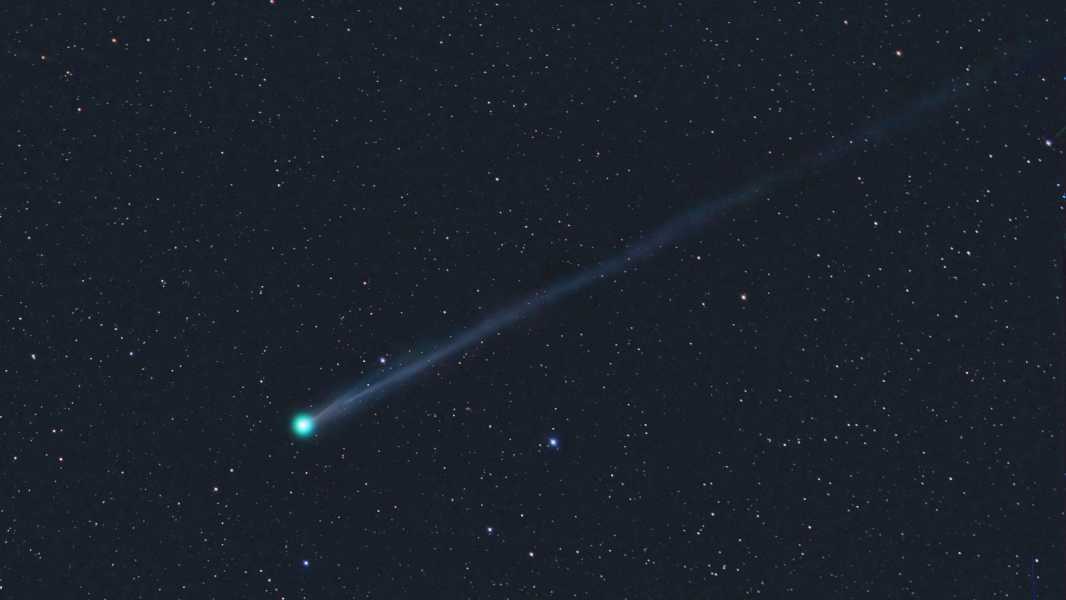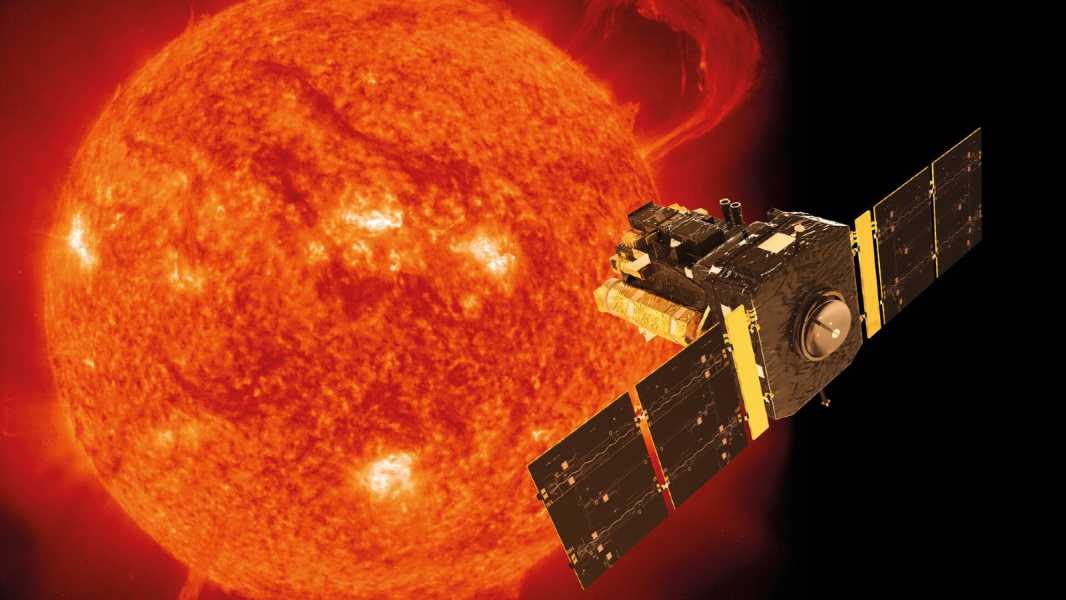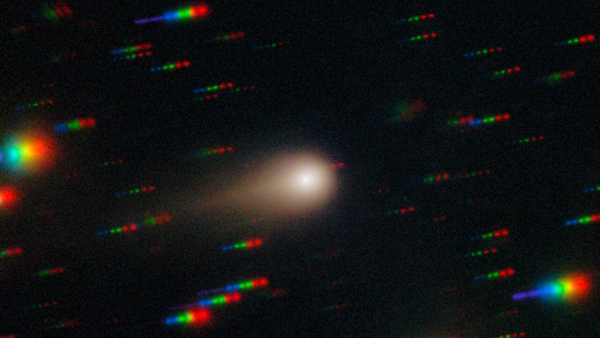
Newly discovered comet SWAN25F will make its closest approach to the Sun on May 1, but many aspects of the bright object remain unknown. (Photo: Michael Jaeger/Gerald Rehmann)
An amateur astronomer has spotted a bright green comet hurtling toward the inner solar system. The emerald object will orbit the sun in less than a month, when it may become visible to the naked eye — but anyone with good equipment in their backyard can see it now.
The new comet, named SWAN25F, was spotted on April 1 by Australian amateur astronomer Michael Mattiazzo, who spotted the comet in images taken by the SWAN camera on the European Space Agency's Solar and Heliospheric Observatory (SOHO) spacecraft, Spaceweather.com reports.
Since then, several astronomers have confirmed the existence of SWAN25F, but the comet has not yet been officially recognized by NASA's Minor Planet Center. As a result, there are still significant gaps in our knowledge of the object's size, origin, distance, speed, and orbit. However, scientists have begun to piece together information about its trajectory through the solar system and expect it to reach perihelion, its closest point to the Sun, on May 1, bringing it to a minimum distance of about 31 million miles (50 million kilometers) from our star.
News of the potential new comet spread quickly, allowing several astrophotographers to capture spectacular images of the comet just days after its discovery, Live Science sister site Space.com reports. The green comet was also captured by the Virtual Telescope Project in Manciano, Italy.
One of the best photographs of SWAN25F to date was taken by astrophotographers Michael Jaeger and Gerald Rehmann of Weissenkirchen, Austria (see above).

The comet was discovered using images taken by the European Space Agency's SOHO spacecraft.
Based on this image, SWAN25F likely has a tail that spans up to 2 degrees across the night sky, Yeager told Live Science. That's pretty significant for a comet that far from the sun, though the tail is pretty faint right now, he added.
The comet's emerald glow is likely due to the presence of dicarbon, a form of carbon in which a pair of atoms are double bonded, which is known to give other comets a green color.
How to see SWAN25F
Initial observations of SWAN25F showed the comet to have an apparent magnitude of about +10, but it quickly brightened to less than +
Sourse: www.livescience.com





